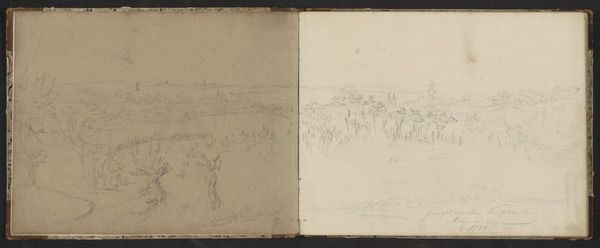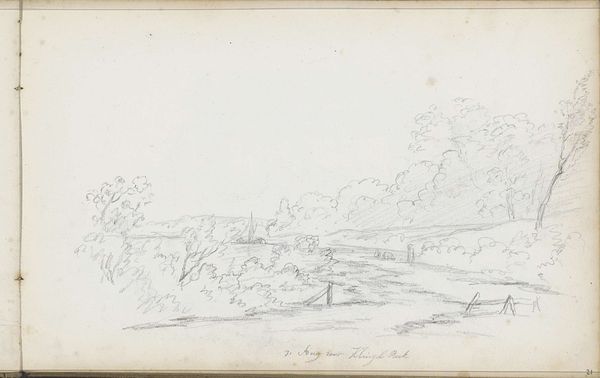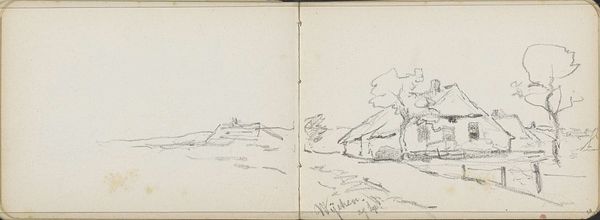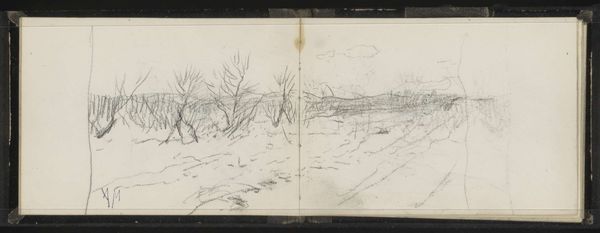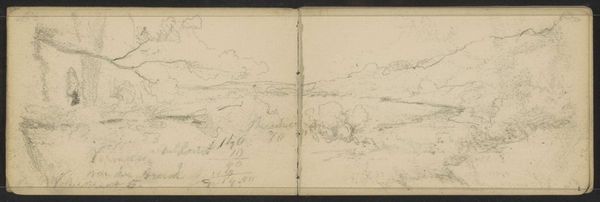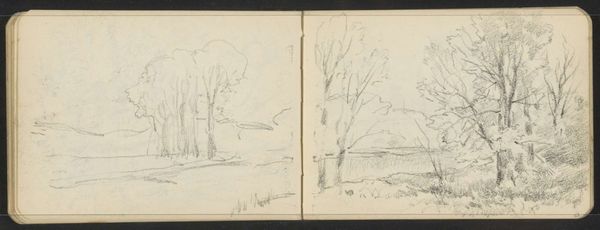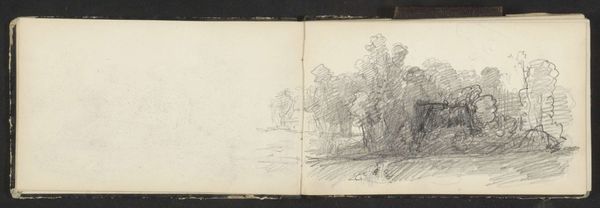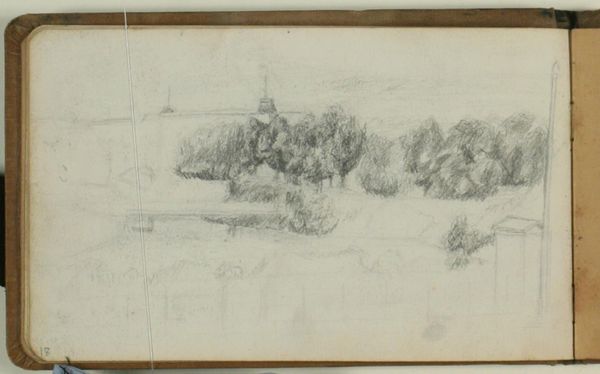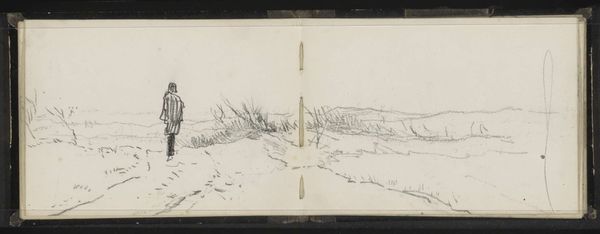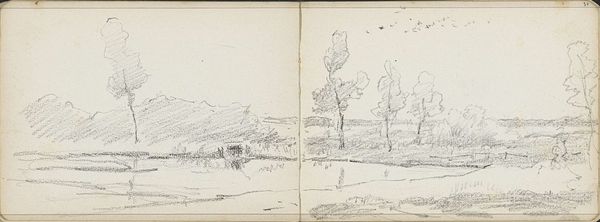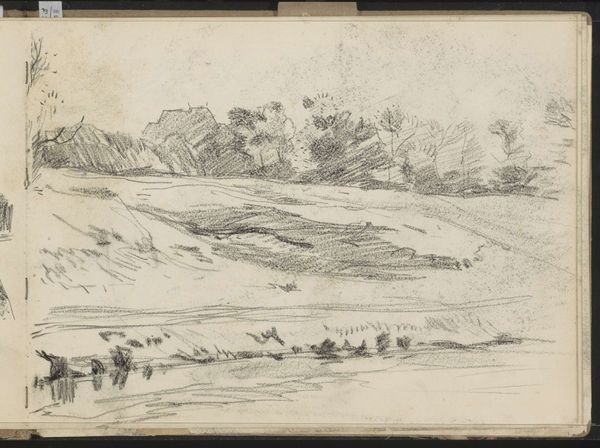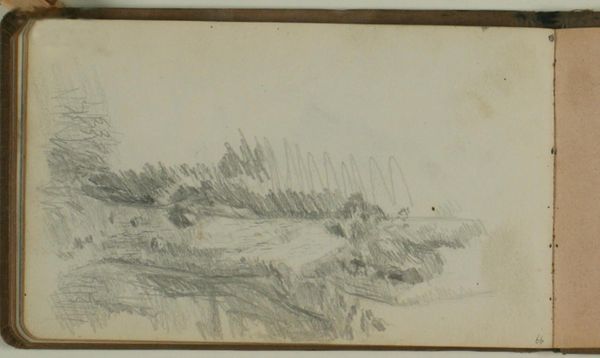
drawing, pencil
#
drawing
#
landscape
#
pencil
#
realism
Copyright: Rijks Museum: Open Domain
Curator: We are looking at Cornelis Springer's "Gezicht op Ermelo met de Oude Kerk," a pencil drawing from around 1863 to 1867, housed at the Rijksmuseum. Editor: My first impression is one of quietude. It’s so delicate, almost like a whisper of a landscape. The spare use of line really captures a feeling of stillness. Curator: Absolutely. Springer was deeply interested in chronicling Dutch towns and their architecture. Think about the historical context: mid-19th century, a growing sense of national identity in the Netherlands. This work plays into a visual construction of place and belonging. It presents Ermelo not as a booming industrial center, but as a charming, timeless village. Editor: The church and windmill are rendered as icons. The spire is an obvious symbol of faith and community, reaching towards the heavens, while the windmill suggests prosperity and industry. Their combination, and the composition within the landscape, presents a harmonized worldview. Curator: Exactly. It is idealized, of course. Rural life was often far from idyllic, but these drawings supported the romantic notions people were developing around national history and community. This connects to how places like the Rijksmuseum collected and presented such views as cornerstones of cultural identity. Editor: Even the starkness of the pencil work itself speaks to that purity – an imagined, perhaps longed-for simplicity of the past. Curator: These detailed drawings served as preparatory sketches for larger paintings, informing and shaping Springer’s finished works. They became powerful visual statements about Dutch heritage, with layers of symbolism, all presented under the guise of topographical accuracy. Editor: Yes. It’s remarkable to see how this subtle drawing carries so much emotional weight, evoking collective memory. Springer captures the picturesque scene and creates a narrative around faith, progress, and enduring community values, so delicately composed and carefully drawn. Curator: Springer’s dedication to detail allowed the local imagery to enter the larger narrative of Dutch culture and identity. This single sketch offered him that agency and vision to inspire. Editor: Truly a fascinating piece. Thank you.
Comments
No comments
Be the first to comment and join the conversation on the ultimate creative platform.
